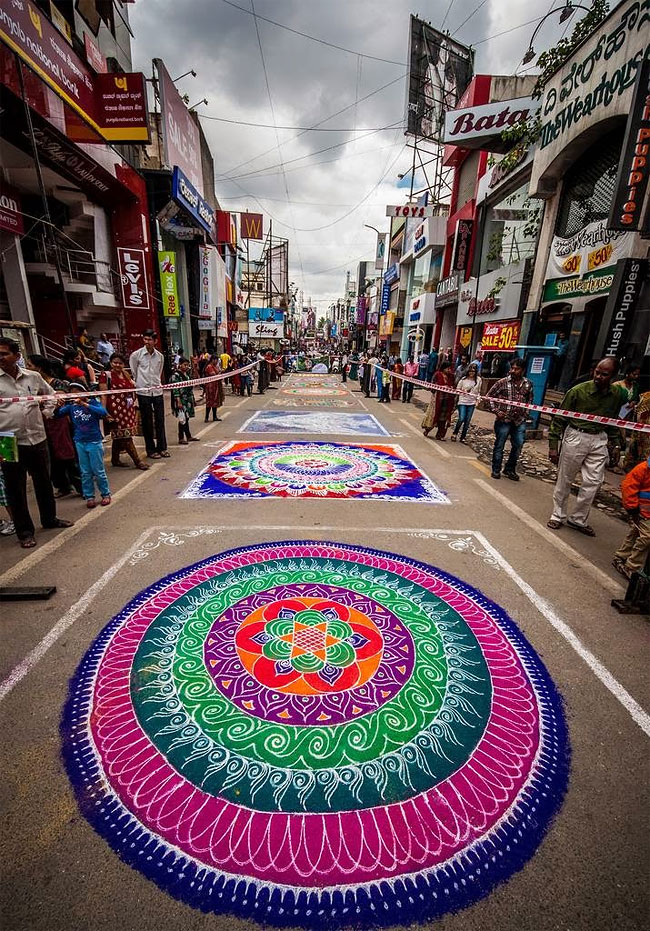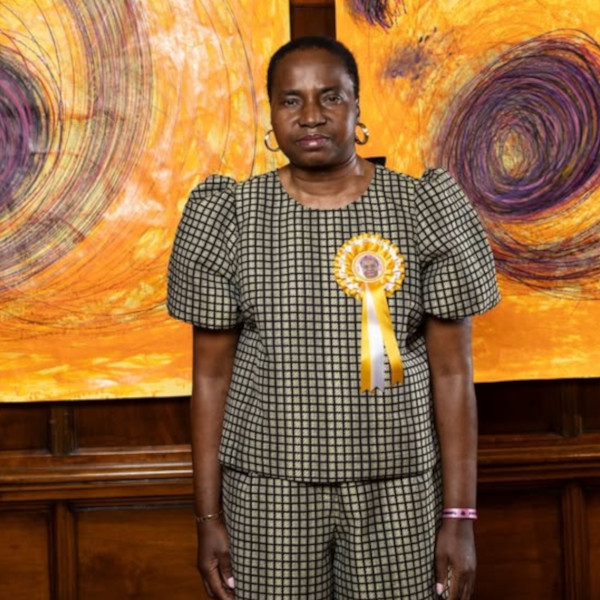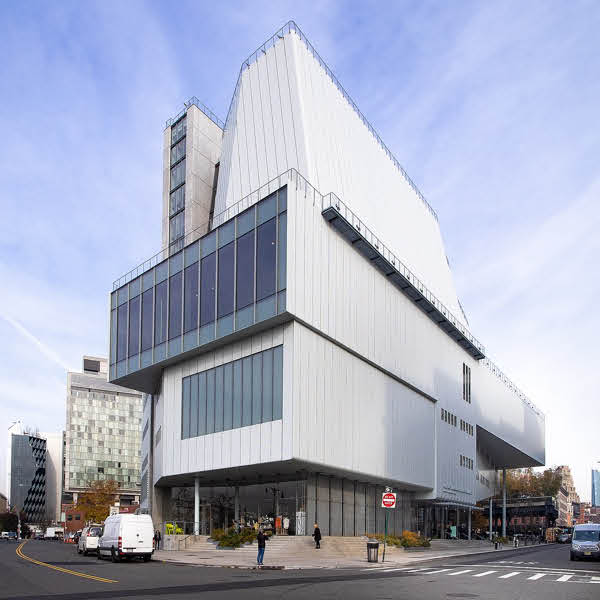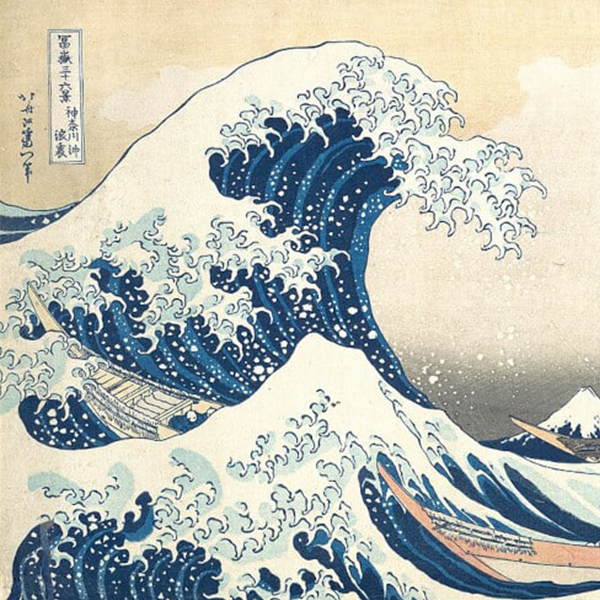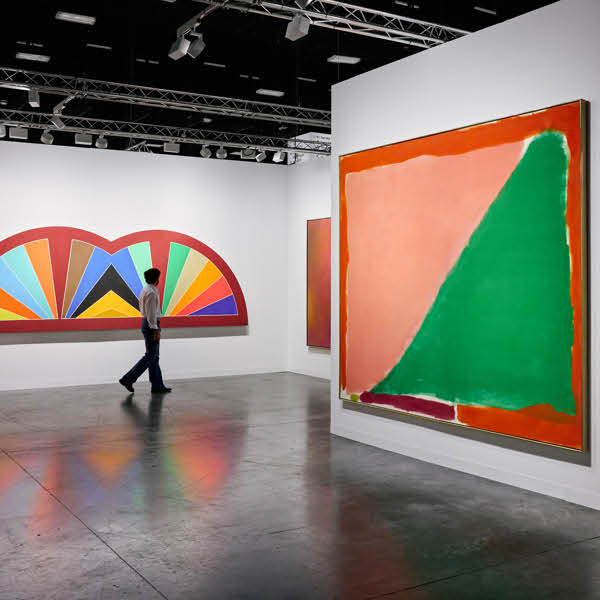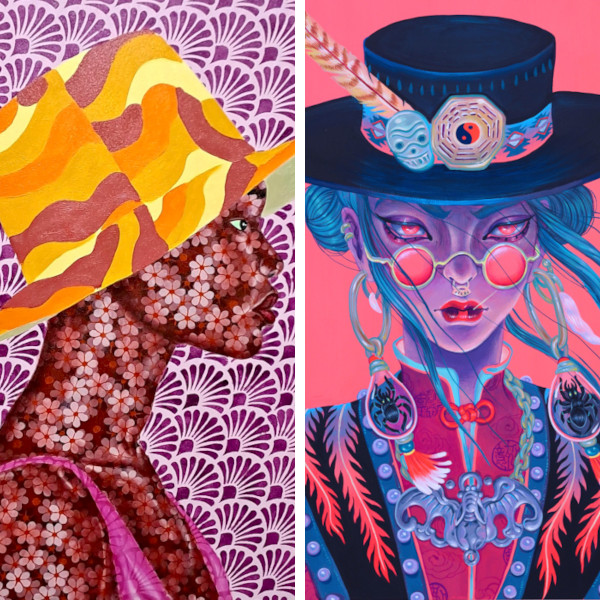In India, there is a long-standing folk art known as rangoli (or kolam or Muggu), in which patterns are created on the floor using materials such as colored rice, dry flour, and more. The bright designs are usually made during auspicious events like Diwali, Onam, Pongal, and other Indian festivals. You'd also see them during wedding celebrations, and their presence is considered sacred welcoming areas for the Hindu deities.
Rangoli is meant as decoration and thought to bring good luck. The images are often geometric shapes, deity impressions, or of flowers and petals. Sometimes, designs are very elaborate and are painstakingly crafted with the help of many people. What results, however, are spectacular artworks that are awe-inspiring in detail and skill.
To craft this incredible tradition, artists use a base material of dry or wet granulated rice, or dry flour. It's colored using sindoor (vermilion), haldi (turmeric), or other natural pigments; the vibrant blues, purples, and teals are all chemically enhanced and considered a modern variation. Flower petals and sand are also used in rangoli designs, adding to the richness and diversity that's possible with this art.
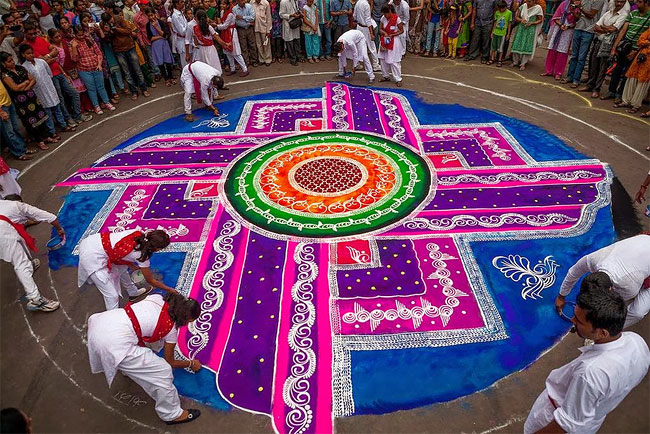
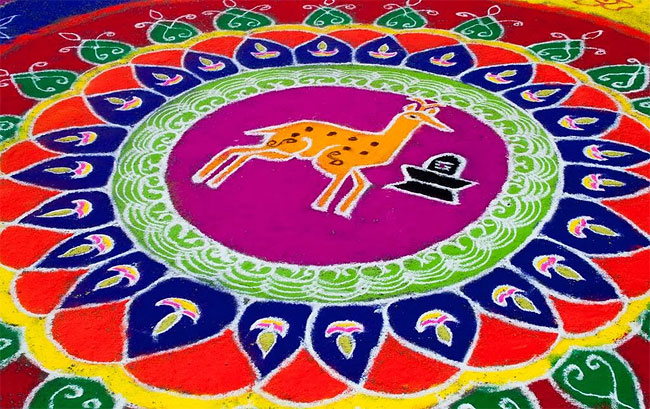

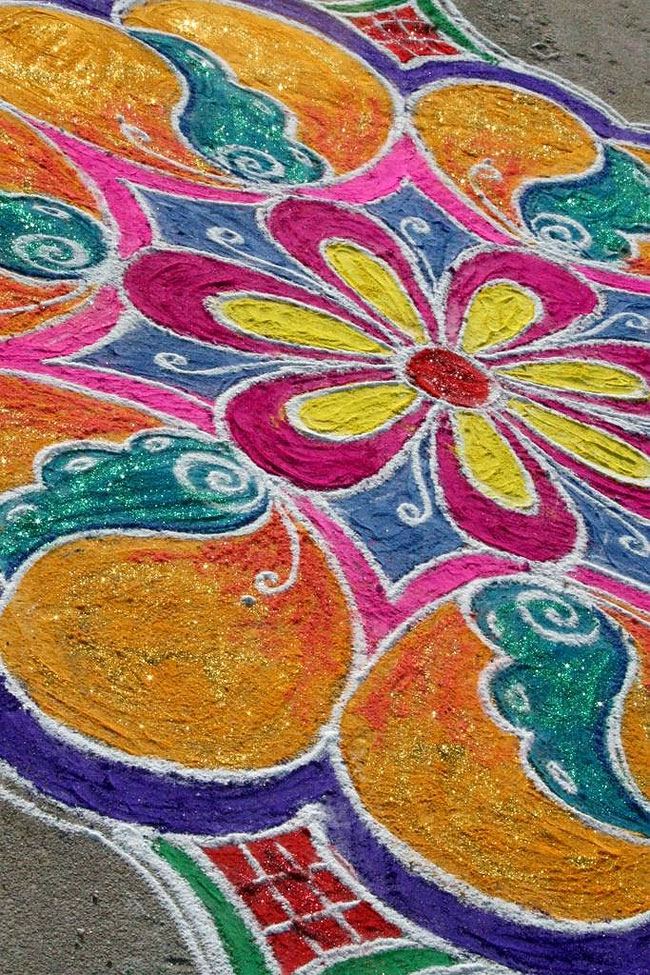
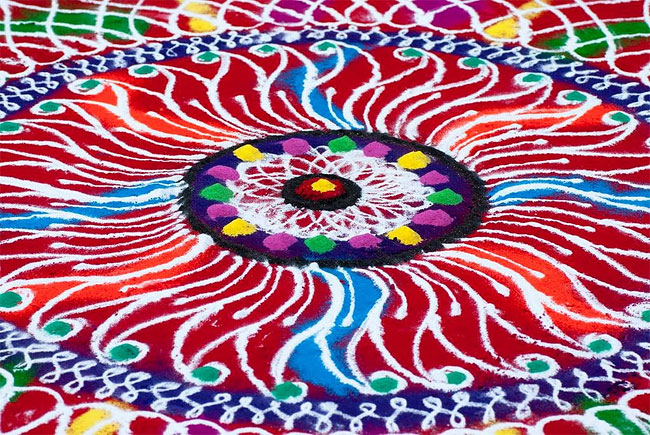
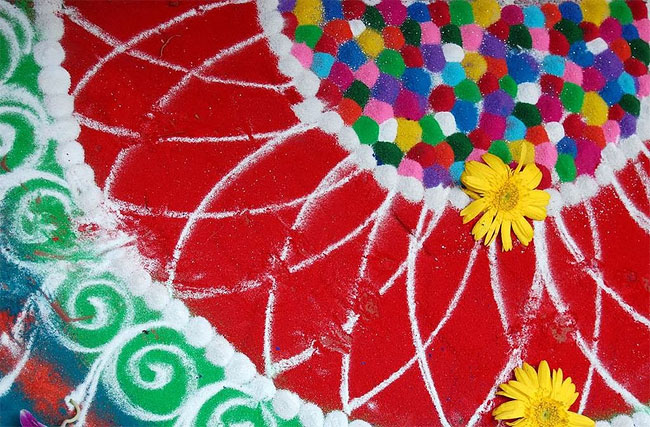

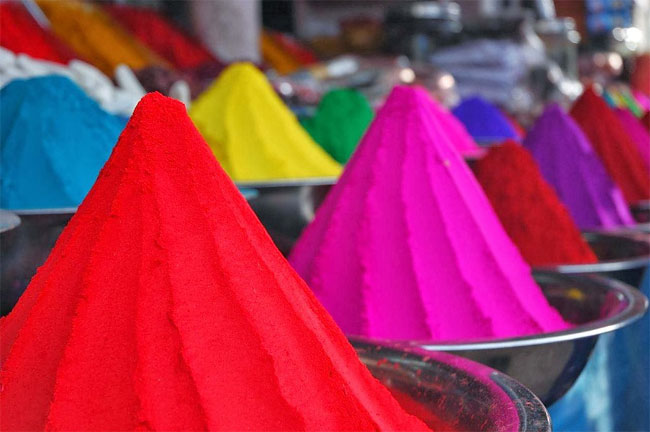
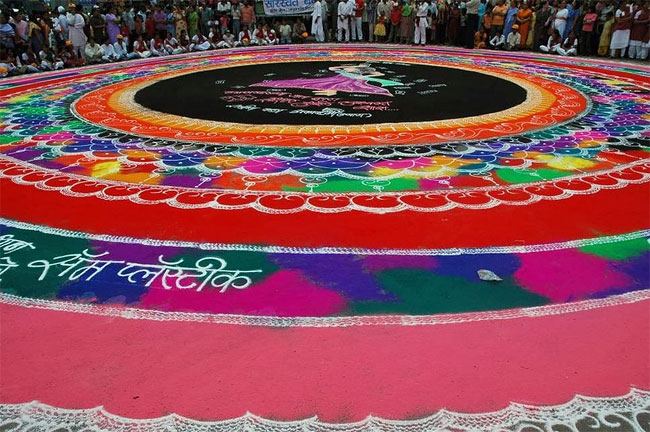
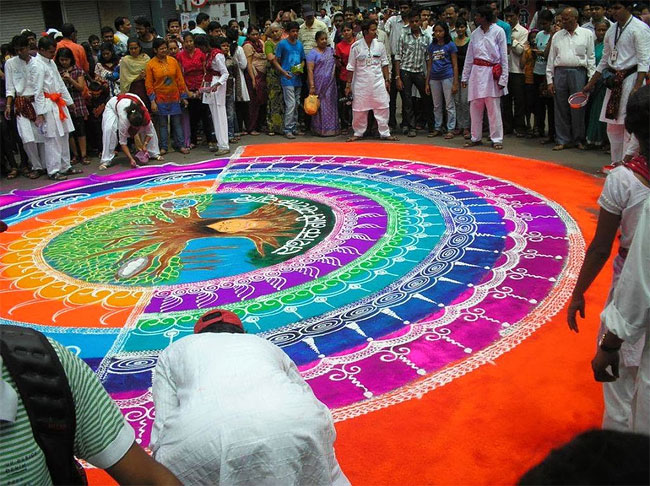 via [ghost in the machine and design you trust]
via [ghost in the machine and design you trust]
